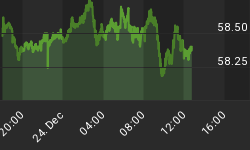LET'S LOOK AT THE HANG SENG DAILY CHART

The pattern at the top on the daily chart is right out of the last e-book I published. I've been doing analysis for 45 years and the same things repeat over and over again. This is a lower double top distribution pattern that shows up in most volatile markets such as the Australian All Ordinaries Index or even wheat has shown this pattern. This is a pattern that represents distribution. The fast move down from this pattern is the normal occurrence. The low day was also a classic exhaustion of the move down with the big gap, wide range day that closed on the low for the day. The question is, was this exhaustion temporary of did it complete the move down? We don't have time to go into the cycles at the high but the harmonic relationship into the future are turning points this Monday and futures price around 19566. Then March 25 and cycle expiration on April 24th. If the trend is down the index shouldn't move back into the distribution. If the trend is down the rally could stop at 4 trading days (doubtful) or 7 to 12 trading days. If it can run past 12 trading days the trend is likely not down. The normal objective for this move down would be the previous high which is also ¼ of the entire bull campaign and is a normal correction. As you can see this index has a dominate 90, 135, 180 calendar day vibration in time.
LET'S LOOK AT THE NIKKEI

This is another market that is dominated by 90, 135, 180 time vibrations. The vertical lines are ½ year or 182 calendar day time intervals. This vibration can run through to 5 years or it can end at anytime, if one understands the patterns of trends then the validity of the "Time" can usually be qualified. This indicates end of April beginning of May as significant. You can see this trend did exhaust by the pattern of trend and this rally is coming from the obvious support of a trendline. The Nikkei had an exhaustion at the high (island) exactly at 90 calendar days from low (that is a time period and pattern that can end trends) and there was also an exhaustion at the low again highlighted by an island. That sets up April 11th as extremely important. Because of the 90 day blowoff I have to assume this rally could fail either Friday/Monday or within 7 to 12 trading days.
LET'S LOOK AT THE US DOW JONES AVERAGES FOR 1946

Back to this theme of Markets simply repeat patterns of trending. This is a chart of the 1946 Dow Jones and the current US Market is likely to repeat the pattern of trend for the 1946 market which means a rally to new highs likely to be 90 calendar days and distribute before going into a bear campaign. Currently we are looking for either a test of this last low or a higher low to confirm the low is in place. This move down seems a bit short in time so we are looking for another swing down to a lower low or a successful retest of the low. If the S&P 500 Index does go to a new low in less time than the rally then the 1326 level is possible. I expect this rally to run 7 to 12 trading days before it is at risk.
















